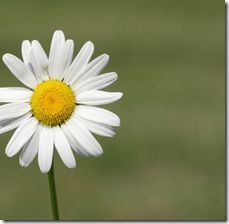Shasta daisy is the common name for the Chrysanthemum Maximum. It is a large, bushy plant, growing to 2 or 3 feet tall with distinctive white-petaled flowers that have yellow centers and make beautiful cut flowers. This perennial flower is relatively easy to grow and is a good choice for beginning gardeners.
About Shasta Daisies
-
Shasta daisies, a hardy perennial, grow well in many climates. They are a shrubby plant with tall-stemmed flowers that are often used in cut arrangements. Their white flower with yellow button centers work well with a wide variety of other perennial and annual flowers. Plant Shasta daisies where you need a punch of bright cheerfulness.
Preparing the Garden Site
-
Shasta daisies need well-drained soil in a sunny location. Prepare your garden site for these perennial plants by working compost into the soil. The extra nutrients will bring a good blossom. Shasta daisies may be grown from seed, seedlings or divisions. Plants set in your garden as seedlings or divisions in the early spring will bloom in June and July of the same year. Plants started from seed will bloom the following year. Cut your Shasta daisy plants down to the ground in the late fall to protect them from frost.
When to Plant Shasta Daisies
-
Shasta daisy seeds should be planted in the very early spring, when there is still a chance of a light frost. The soil should not be frozen or very wet. The seeds will germinate in 10 to 20 days. Seedlings and divisions should also be set into the garden in the very early spring. Because these plants need fast-draining soil, it is important to plant when the soil has dried out enough to keep the roots from sitting in water.
Caring for Shasta Daisies
-
Shasta daisies are generally disease and insect free, but they occasionally are susceptible to slugs and snails. Sprinkle diatomaceous earth around the base of the plants to discourage these pests naturally. Also watch for leaf spots, stem rots and leaf miners. Pull and discard any affected plants. Feed your Shasta daisies with a fertilizer high in phosphorous prior to blooming to encourage a more spectacular display. During and after blooming, dead flower heads should be pinched back. Regularly cut flower stems for flower arrangements, which also encourages further blooming.


Deprecated: strpos(): Passing null to parameter #1 ($haystack) of type string is deprecated in /home/agriviek8Qv/agriviet.net/public_html/wp-includes/comment-template.php on line 2522